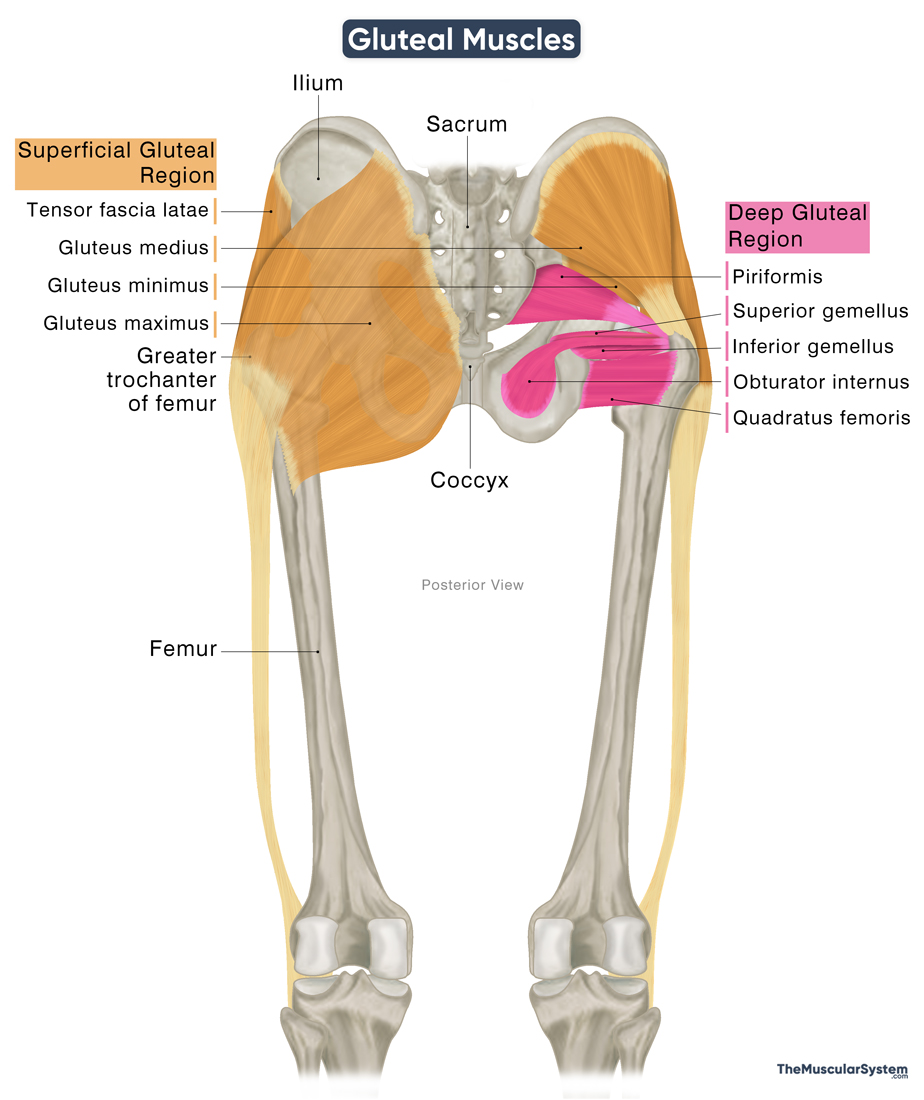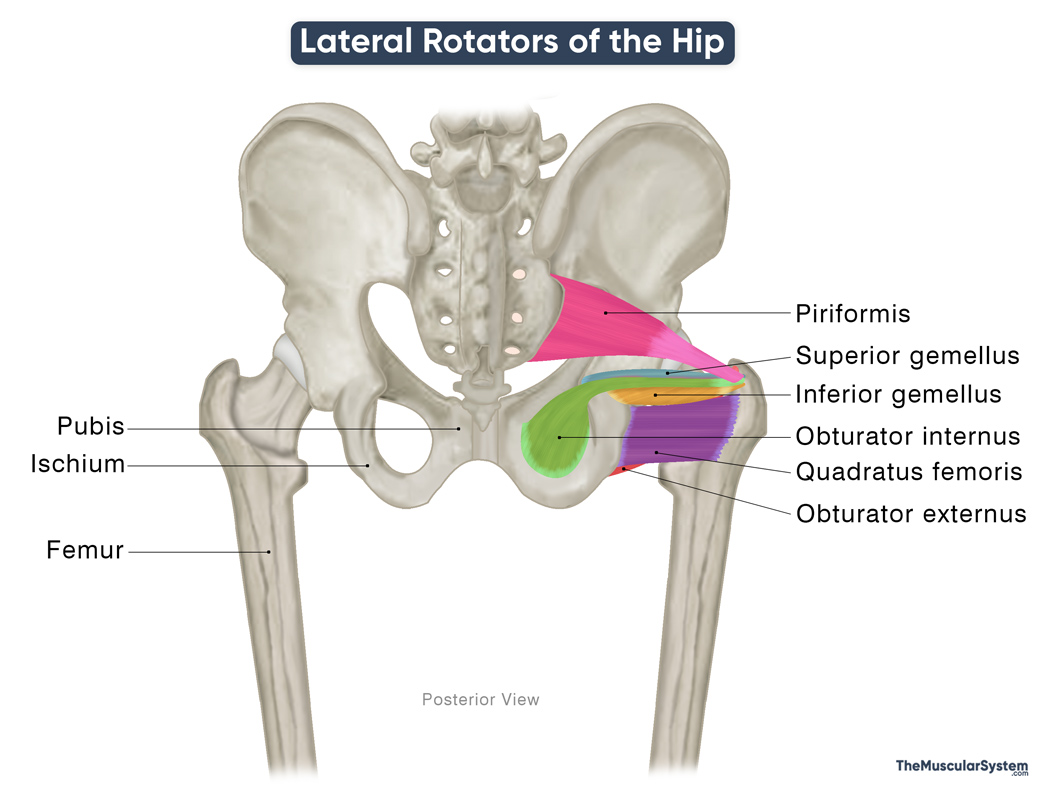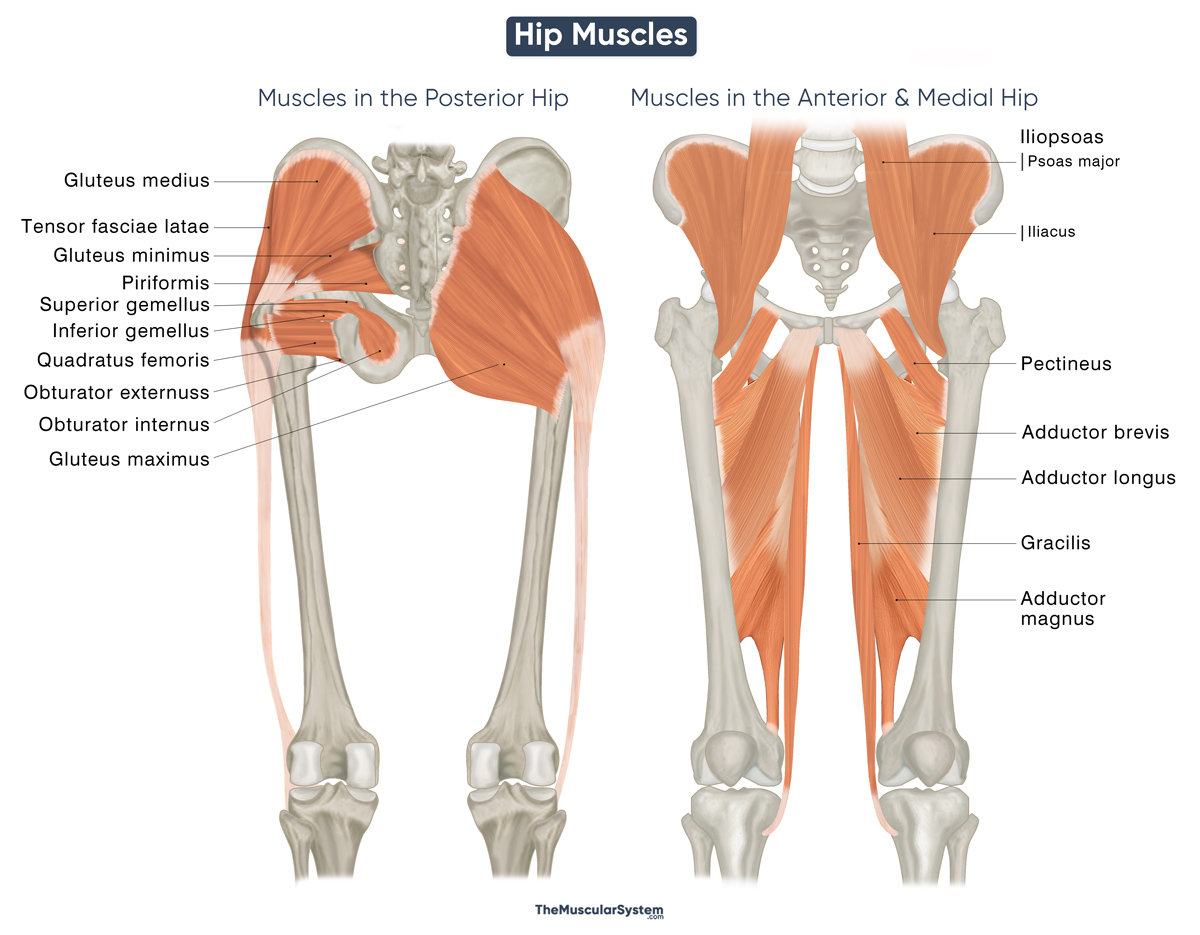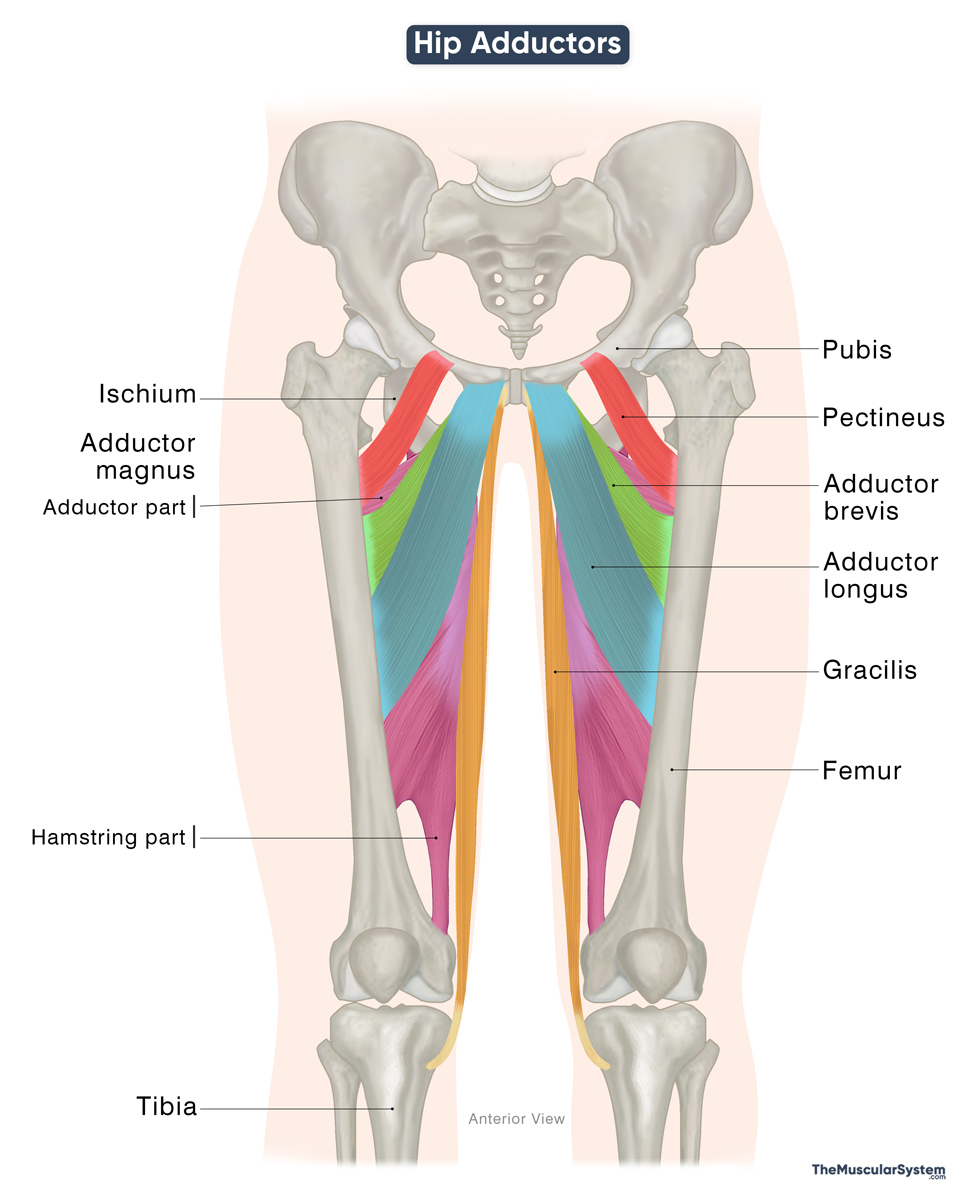Hip Muscles
In anatomical terms, the hip muscles are often defined as those located within the gluteal region, since they are situated within the anatomical boundaries of the hip. However, the concept is broader than location alone. Any muscle that produces movement at the hip joint can be considered a hip muscle, even if it lies outside the hip region. For instance, several muscles in the thigh are classified as hip muscles because their primary function is to act on the hip joint.
Movements of the Hip Joint
The hip joint allows a wide range of movements that are essential for everyday activities, including:
- Flexion and Extension: Flexion occurs when the hip joint folds to move the thigh forward, such as when sitting down. Extension is the opposite movement, like when standing up again.
- Abduction and Adduction: Abduction refers to moving the thighs away from each other, while adduction brings them closer together.
- Medial and Lateral Rotation: Medial rotation occurs when you turn the thigh inward, whereas lateral rotation is turning it outward, like when changing directions while walking.
List of the Muscles in the Hip Region
All of these muscles attach to the hip bone and are organized here based on their location and function at the hip joint.
Posterior Hip Region
Gluteal Muscles
These are the muscles that lie in the superficial gluteal region, often referred to simply as the gluteal muscles or glutes:
Gluteus maximus is the primary hip extensor, while the other three muscles are responsible for abduction and medial rotation of the hip joint.
Even though the hamstrings (biceps femoris, semitendinosus, and semimembranosus) help the gluteus maximus extend the hip, they are not classified as hip muscles, since their main role is moving the knee.
Lateral Rotators
These are the deep muscles in the gluteal region, primarily responsible for laterally or externally rotating the thigh at the hip joint:
- Piriformis
- Obturator internus
- Superior gemellus
- Inferior gemellus
- Quadratus femoris
- Obturator externus
Despite being part of the lateral rotator group, the obturator externus is more often classified with the muscles of the medial compartment of the thigh, rather than with those of the gluteal region.
Anterior and Medial Hip Regions
The Iliopsoas Muscle Compex
These muscles act as powerful flexors of the hip joint.
These are two distinct muscles in the posterior wall of the abdominal cavity. However, once they cross the inguinal ligament to enter the groin area, the two muscles blend to form one single structure called the iliopsoas complex.
Note that the rectus femoris, sartorius, and pectineus also contribute to hip flexion, but their primary function involves moving the knee joint, so they are not part of the hip muscle group.
These muscles are located in the medial compartment of the thigh, forming the groin region, and helping with hip adduction:
Beyond movement, these muscles play a crucial role in stabilizing the hip joint. By keeping the femur properly aligned within the acetabulum, the cup-shaped socket in the hip bone, they provide a stable base for the pelvis and lower limb. Working in synergy with the muscles of the knee and ankle, they also allow coordinated movement of the entire lower limb.
This stability is essential for nearly all daily activities, from walking, running, and climbing stairs to maintaining balance while standing or changing direction.
References
- Hip and Thigh Muscles: Kenhub.com
- Hip Muscle: ScienceDirect.com
- Muscles of the Hip: A Comprehensive Guide: JOIOnline.net









